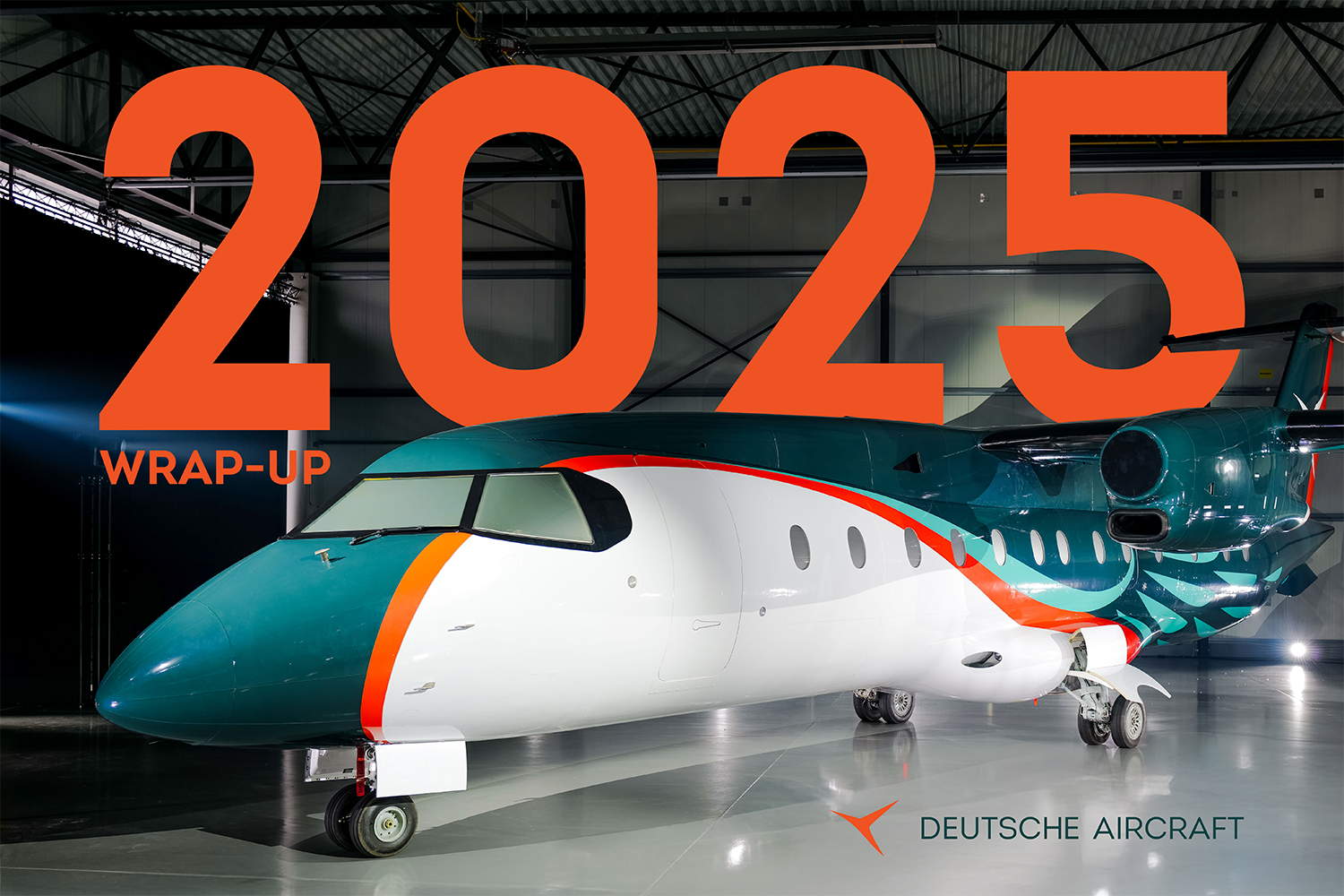The D328eco: A solution for regional aviation in North America

The vast geographic expanse of North America has long been a catalyst for the development of regional aviation. As pioneers of the hub-and-spoke system that transformed regional air travel, commuter airlines in the United States used smaller aircraft as feeders to connect remote communities to larger, central airports that served as hubs within a network of routes. This approach enabled operators to deploy the right-sized aircraft that were more efficient and profitable, while expanding services to underserved regions, which fostered economic growth and strengthened nationwide connectivity.
While these routes have historically been dominated by jet aircraft, the regional aviation market is undergoing a significant shift. The need for low-emission, fuel-efficient solutions has become paramount, alongside the growing demand to replace ageing fleets. The D328eco turboprop from Deutsche Aircraft has emerged as a compelling solution in North America.
How has regional aviation changed in the past 25 years?
In the late 1990s, the regional aviation landscape looked very different. Eight Original Equipment Manufacturers (OEMs) were actively producing 13 different aircraft types that accommodated 19 to 78 passengers, which are gradually being phased out and consolidated for newer and better aircraft platforms.
In North America, the fleet size of regional jets and turboprops with 19 to 50 seats has declined in the past 12 years. While this trend may seem unfavourable, it is important to recognise that the fleet reduction has primarily been in the regional jet segment. Given their high operational cost, earlier retirement age and increasing sustainability concerns, coupled with potential regulatory modifications for part 135 operations, there is a compelling case to replace jet aircraft with more cost-effective and efficient turboprops. TPs currently make up more than half of the overall regional fleet and operators have realised the greater resilience of the turboprop segment.

According to a report by The Air Current, North America (led by Canada) had the highest number of turboprop ASKs before the COVID-19 pandemic. This indicates a strong preference for turboprop aircraft for shorter, more frequent regional routes.

The same report indicates that a large proportion of 19- to 50-seater turboprops are more than 22 years old, suggesting they are approaching the end of their service life and due for replacement in the coming decade.

The D328eco: The Answer to the Industry’s Problems
Given these uncertain times for regional air travel, especially for jets, the D328eco can be a game-changer to reinvigorate the glory of the regional market in North America. This modern, efficient and profitable platform offers key features that make it an ideal fit.
The turboprop of the 21st century
Deutsche Aircraft is set to revolutionise the turboprop experience by introducing the D328eco. Key features include:
• Lightweight design made of advanced composites;
• Pratt and Whitney PW127XT-S engine which offers 40% longer time-on-wing, 20% reduction in maintenance costs and a 3% reduction in SFC compared with previous generation platforms;
• Garmin® Companion flight deck that rivals the comfort and convenience of a business aircraft while maximising situational awareness and improving efficiency with single lever engine control, large touch-based flight displays, Performance Based Navigation (PBN), Enhanced Synthetic Vision (SVT) and electronic charts and documents.
The right range for any regional sector
Regional air travel serves as the essential spokes in the hub-and-spoke model that is predominantly used in the North American market. This network is defined by frequent, short-haul connections from Tier 2 and 3 regions to major hubs, where larger carriers operate.
The average trip length for regional carriers has been gradually increasing over the years and is currently around 450NM.

The D328eco’s nominal range of 600NM falls well in line with the requirements of the market. Its low maintenance cost and higher operational efficiency offers regional airlines the perfect solution that will carry on their legacy.


Superior operational efficiency & accessibility
The exceptional operational capabilities of the D328eco, including a 30,000ft service ceiling, a maximum cruise speed of 324 KTS and a climb rate of 2,355 ft/min (MTOW-ISA-SL) enable it to achieve outstanding block time across stage lengths. These metrics are superior to similar-sized turboprops on the market and rival the capabilities of similar-sized regional jets.
As a result, there is currently a tremendous potential in the market for the replacement of not just aging in-service regional turboprops but also regional jets, given that the North American region is the largest operator.

The platform offers a wide operating temperature range, from -104° F to +122° F, making it suitable for the varied landscapes across the North American continent. The D328eco also boasts exceptional performance in icing conditions (climb rate 1,848ft/min) with the ability to land and take-off from icy and unpaved runways. This is crucial for remote regions of Canada that have challenging conditions and low demand. Moreover, with the sector leading low break-even factor and 2,625ft STOL capabilities, it can also help carriers seeking to open new, remote routes while maintaining profitability, even in markets with low demand.

Exceptional fuel economics
North America is by far the biggest user of regional jets in the world, accounting for 57% of all regional jet frequencies in 2022. Western Europe comes in second at 14.7%, which shows the jet-driven focus of the North American market.
Although regional jets are relatively younger than turboprops, there has been significant advancements in the efficiency and engine technology of modern turboprops in the last ten years. With rising fuel costs (which represent a significant 30% of operating costs for an aircraft) and a tectonic shift in the industry’s focus towards sustainability (turboprops are considered to be 10-30% more fuel efficient than a similar-sized jet aircraft), the D328eco is a prudent solution that will help operators save on fuel costs and enable them to meet sustainability targets while offering the performance metrics and the operational comfort of a regional jet.
On average, our performance analysis results indicate a 60% reduction in block fuel per trip and a 25% reduction in block fuel/per passenger and only a 15% increase in block time compared to a similar-sized regional jet across stage lengths (up to 500NM).


A mainline passenger experience that meets the unique demands of regional operations
Stylish and sleek with minimum parts for low maintenance, the 40-seater cabin of the D328eco will be fitted with ergonomic, lightweight seats with a 30” pitch in a 2:1 configuration to offer class-leading space. Large overhead bins can fit three standard carry-on bags each to ensure ample storage. Connectivity solutions and power outlets enhance passenger convenience. With a noise level of 78 dB, the cabin is the quietest of any turboprop and competitive with jets. The cabin also features a modern, fully equipped galley and an accessible lavatory.
The cabin exterior features a forward passenger door that is jet-bridge compatible. This not only enhances passenger convenience but also helps operators in the efficient servicing of the aircraft, enabling a turnaround time of 20 minutes.
.avif)
Unmatched operational versatility and flexibility
The outstanding operational flexibility of the D328eco enables it to handle the most challenging environments, with exceptional STOL performance for steep approaches and unpaved runway operations. Its modular cabin layout has a quick conversion capability and the aircraft is equipped with a large In-Flight Air Operable Door and gravel kit, allowing a diverse range of missions from any airfield.
In fact, the C-146A “Wolfhound”, a multi-role version of the in-service D328® commuter turboprop, has been an integral part of the U.S. Air Force Special Operations Command since 2011. With 200,000 operational flight hours logged, this multi-mission workhorse has completed critical missions around the world, proving its exceptional versatility and strategic capabilities.
With North America making up 25% of the special mission aircraft market and Deutsche Aircraft backed by SNC Corp, a major player in special mission systems integration in the North American market, the multi-role variant of the D328eco will serve as an ideal platform for special missions such as military transport, C4ISR, and maritime and border patrol in the region


The aircraft for the present and the future
Leading the charge towards a truly sustainable future, the D328eco is fully compatible with Sustainable Aviation Fuel (SAF). SAF is a cleaner and more practical alternative to conventional Jet-A1 fuel and requires minimal changes to the existing infrastructure. As SAF production ramps up, the D328eco is ready to embrace its full potential. Deutsche Aircraft also have an ongoing research partnership with the German Aerospace Center (DLR) to test alternative propulsion technologies such as hybrid hydrogen-based propulsion and fuel cells with the D328® turboprop as the test bed, ensuring that the OEM remains at the forefront of aviation advancements.
The next level in regional aviation in North America will begin in 2027
With EIS scheduled for 2027, the innovative D328eco is poised to meet the evolving needs of regional air travel in North America. The platform has the right combination of performance, operational capabilities and cost-effectiveness, making it the ideal replacement for aging turboprops on the market. With its unmatched flight deck, speed, climb rate and superior altitude capabilities, the D328eco will match the performance of regional jets that have historically dominated the North American market and is ready to move the industry forward with its SAF compatibility.
For media enquiries, please contact pressoffice@deutscheaircraft.com

.png)











